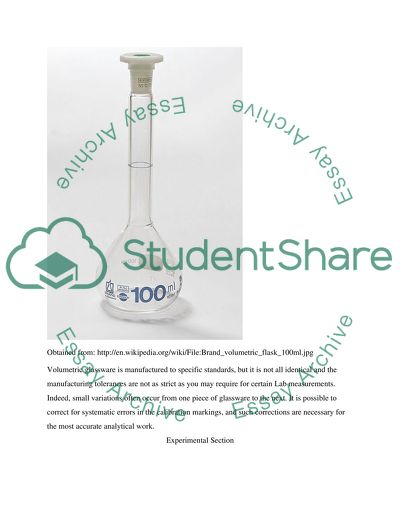Calibration of Glassware Lab Report Example | Topics and Well Written Essays - 500 words. Retrieved from https://studentshare.org/chemistry/1599547-calibration-of-glassware
Calibration of Glassware Lab Report Example | Topics and Well Written Essays - 500 Words. https://studentshare.org/chemistry/1599547-calibration-of-glassware.


